Recent Posts
How to Turn off Your Main Water Source after Property Damages
3/12/2025 (Permalink)
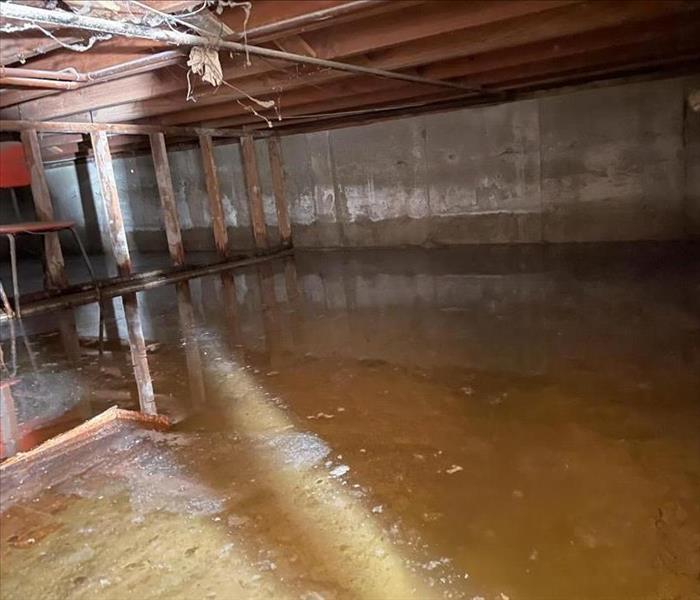 Knowing how to promptly shut off your home's main water supply can significantly mitigate damage and save on costly repairs.
Knowing how to promptly shut off your home's main water supply can significantly mitigate damage and save on costly repairs.
Water damage is a prevalent issue for homeowners, with approximately 1 in 60 insured homes filing a water damage or freezing claim each year. Knowing how to promptly shut off your home's main water supply can significantly mitigate damage and save on costly repairs.
Understanding the Importance of the Main Water Shut-Off Valve
The main water shut-off valve controls the flow of water into your home. In the event of a burst pipe, appliance malfunction, or other water-related emergencies, quickly closing this valve can prevent extensive water intrusion and property damage.
Locating Your Main Water Shut-Off Valve
The location of the main shut-off valve varies depending on your home's design and regional practices:
- Basements: In homes with basements, the valve is typically situated near the front foundation wall, where the main water line enters the house.
- Crawl Spaces or Slab Foundations: For homes without basements, check near the water heater or in utility areas.
- Exterior Locations: In warmer climates, the shut-off valve may be located outside, attached to an exterior wall, or in an underground box.
Familiarize yourself with the valve's location before an emergency arises to ensure a swift response when needed.
Understanding the type of shut-off valve in your home is crucial for proper operation:
- Gate Valve: Common in older homes, this valve features a round handle. To close it, turn the handle clockwise until it stops. Note that gate valves may require multiple turns to fully close.
- Ball Valve: Typically found in newer homes, this valve has a lever handle. Turning the lever 90 degrees (a quarter turn) will shut off the water supply.
Step-by-Step Guide to Shutting Off Your Main Water Supply
- Locate the Main Shut-Off Valve: Identify the valve's position in your home as described above.
- Turn Off the Valve: Depending on the valve type:
- Gate Valve: Rotate the handle clockwise until fully closed.
- Ball Valve: Turn the lever 90 degrees to the off position.
- Drain the System: After shutting off the main valve, open faucets at the highest and lowest points in your home to drain any remaining water.
Frequently Asked Questions
Q: How often should I inspect my main water shut-off valve?
A: It's advisable to check the valve every six months to ensure it operates correctly.
Q: What should I do if the valve is stuck or difficult to turn?
A: Avoid applying excessive force. Contact a professional plumber to assess and address the issue.
Q: Is it necessary to shut off the water supply when going on vacation?
A: Yes, turning off the main water supply before extended absences can prevent potential water damage from unnoticed leaks or pipe failures.
Being prepared and knowledgeable about your home's main water shut-off valve is essential for minimizing damage during water-related emergencies. Taking proactive steps can protect your property and provide peace of mind.
Winter Water Damage: Causes, Prevention, and Expert Tips
1/10/2025 (Permalink)
 The cold weather wreaks havoc on your property; understand how and why!
The cold weather wreaks havoc on your property; understand how and why!
Winter is a beautiful season of snow-covered landscapes and cozy nights by the fire in Longmont, CO, but it also brings unique risks to your home, particularly in the form of water damage. The cold weather wreaks havoc on your property from frozen pipes to ice dams. Understanding the types of winter water damage, how to identify them, and what steps to take help you minimize risks and ensure your home stays safe during the colder months.
Common Causes of Winter Water Damage
Winter water damage comes in many forms, but the following are the most common issues:
Frozen and Burst Pipes
When temperatures plummet, water in pipes freezes and expands, causing them to burst. According to State Farm, a 1/8-inch crack in a pipe releases up to 250 gallons of water per day, leading to extensive damage in a short time.
Ice Dams
Ice dams occur when snow melts on your roof and refreezes at the eaves, creating a barrier that prevents further melting snow from draining. The trapped water seeps into your home, damaging walls, ceilings, and insulation.
Flooding from Snowmelt
A sudden thaw after heavy snowfall results in significant snowmelt, which overwhelms drainage systems and can flood a basement or crawl space.
Condensation
The difference between indoor heating and cold outdoor temperatures condense windows and walls, leading to moisture buildup. Over time, this contributes to mold growth and structural damage.
How to Prevent Winter Water Damage
Being proactive is the best way to protect your home from winter water damage. Here are a few tips to keep in mind:
- Insulate Pipes: Wrap exposed pipes with insulation sleeves to prevent freezing.
- Maintain Gutters: Clear gutters of leaves and debris to ensure proper drainage of melting snow.
- Seal Cracks: Inspect and seal cracks around windows, doors, and your foundation to prevent water infiltration.
- Monitor Roof Condition: Regularly inspect your roof for damage and ensure proper ventilation to reduce ice dam risks.
- Keep an Eye on Indoor Humidity: Use a dehumidifier to maintain optimal indoor humidity levels and prevent condensation.
What to Do If You Experience Winter Water Damage
If you suspect water damage in your home, acting quickly is crucial to minimize further issues:
- Turn Off the Water Supply: Shut off the main water valve to stop the flow.
- Remove Excess Water: Use a wet/dry vacuum or mop to remove standing water.
- Call a Professional: Winter water damage often requires expert restoration. SERVPRO® is equipped to handle frozen pipe bursts, ice dam leaks, and other seasonal water damage with efficiency and care.
- Document the Damage: Take photos and make a detailed list of damaged items for your insurance claim.
Trust SERVPRO for Winter Water Damage Restoration
Winter water damage is often overwhelming, but SERVPRO’s experienced team is Here to Help®. We provide fast, professional water damage restoration to mitigate the problem and restore your home to its preloss condition. With advanced equipment and proven techniques, we address water damage at its source, helping to prevent further issues like mold growth.
By staying informed and proactive, you minimize the risks of winter water damage and enjoy the season with peace of mind. Contact SERVPRO today for expert advice and restoration services to keep your home safe, warm, and dry this winter.
The dangers of space heaters and how to use them safely
12/11/2024 (Permalink)
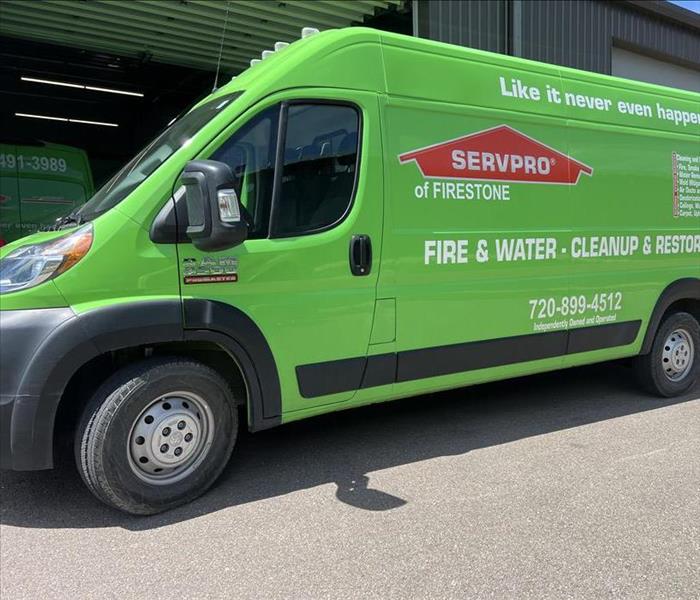 Remember, for professional fire damage restoration or assistance after an incident, SERVPRO® of Longmont and Firestone is always ready to help.
Remember, for professional fire damage restoration or assistance after an incident, SERVPRO® of Longmont and Firestone is always ready to help.
As the temperatures drop in Longmont and Firestone, many residents turn to space heaters for quick and easy warmth. While space heaters can be incredibly convenient, they also pose significant fire hazards if not used properly. According to the National Fire Protection Association (NFPA), space heaters are responsible for 43% of home heating fires and 85% of associated deaths. It’s essential to understand the risks and follow expert advice to ensure your space heater keeps you warm without putting your home in danger.
Understanding the Dangers of Space Heaters
Space heaters, although small and portable, can cause massive fires if left unattended or misused. One of the biggest risks is placing them too close to flammable materials such as furniture, curtains, or bedding. Overloaded circuits from plugging space heaters into extension cords or power strips can also lead to dangerous electrical fires.
Furthermore, older or malfunctioning heaters are more likely to overheat, causing internal fires that may spread rapidly. These risks highlight why taking precautions is so important when using space heaters in your home.
Tips for Safe Space Heater Use
To minimize the risks associated with space heaters, follow these safety tips from fire safety experts:
- Keep a 3-foot clearance around the heater: Ensure the heater is at least three feet away from anything that could catch fire, like paper, curtains, or furniture.
- Use the heater on a flat, hard surface: Always place the space heater on the floor, not on tables or furniture where it could easily tip over.
- Never leave it unattended: Turn off and unplug the heater when you leave the room or go to bed.
- Use heaters with automatic shutoff: Look for models that shut off automatically if they overheat or tip over.
- Plug it directly into a wall outlet: Avoid using extension cords or power strips, which can increase the risk of electrical fires.
Choose the Right Space Heater
When shopping for a space heater, look for models that meet the latest safety standards. The Underwriters Laboratories (UL) or Intertek (ETL) certifications indicate that the heater has been tested for safety. Also, consider heaters with built-in features like automatic shutoff or temperature controls to minimize risk.
Final Thoughts
Space heaters can be a practical heating solution, but only if used safely. By following these safety guidelines, you can reduce the risk of fire in your Longmont or Firestone home while enjoying a cozy winter. Remember, for professional fire damage restoration or assistance after an incident, SERVPRO® of Longmont and Firestone is always ready to help.
For more information on space heater safety, visit the National Fire Protection Association.
6 Tips for Building a Mold-Resistant Home
11/13/2024 (Permalink)
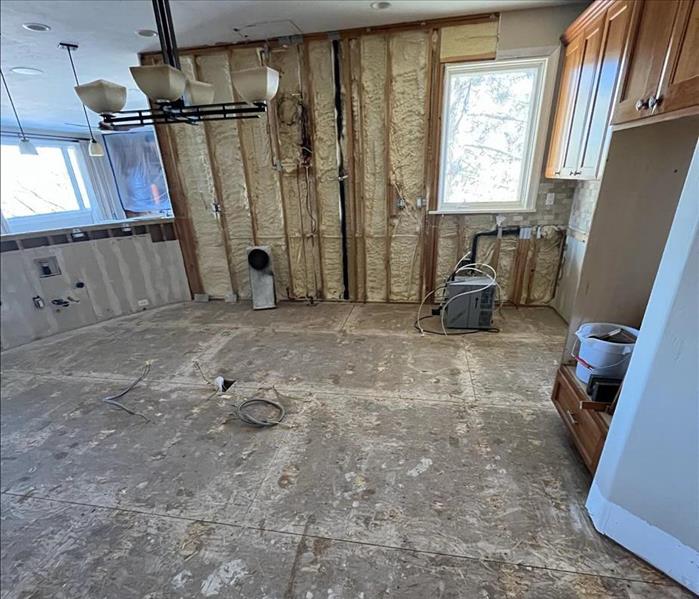 Don't hesitate to contact a professional mold remediation company like SERVPRO of Firestone, Platteville for assistance.
Don't hesitate to contact a professional mold remediation company like SERVPRO of Firestone, Platteville for assistance.
Are you looking to create a healthier living environment by making your home more resistant to mold growth? Mold is not only unsightly but can also pose serious risks to you and your property. Fortunately, there are several proactive steps you can take to prevent mold from taking hold in your home. In this guide, we'll explore some effective strategies for creating a mold-resistant home.
1. Proper Ventilation
One of the most important factors in preventing mold growth is maintaining proper ventilation throughout your home. Make sure that your bathrooms, kitchen, and laundry areas are well-ventilated to reduce moisture from building up. Consider installing exhaust fans in these areas to help remove excess humidity and prevent mold growth.
2. Monitor Indoor Humidity Levels
High indoor humidity levels can create the perfect breeding ground for mold. Invest in a hygrometer to monitor humidity levels in your home and aim to keep them between 30-50%. If humidity levels are consistently high, consider using a dehumidifier to remove excess moisture from the air.
3. Address Water Leaks Promptly
Water leaks, whether from plumbing fixtures, roofs, or windows, can quickly lead to mold growth if left unchecked. Inspect your home regularly for any signs of water damage, such as water stains, dampness, or musty odors. If you detect a water leak, address it promptly to prevent mold from spreading.
4. Use Mold-Resistant Building Materials
When building or renovating your home, opt for mold-resistant building materials whenever possible. Materials such as mold-resistant drywall, paint, and insulation can help prevent mold growth and make it easier to maintain a mold-free environment.
5. Maintain Your HVAC System
Your heating, ventilation, and air conditioning (HVAC) system plays a crucial role in controlling indoor humidity levels and circulating clean air throughout your home. Regular maintenance of your HVAC system, including changing filters and cleaning ducts, can help prevent mold growth and also improve indoor air quality.
6. Keep Your Home Clean and Clutter-Free
Regular cleaning and decluttering can help prevent mold by eliminating potential hiding spots for mold spores. Pay special attention to areas prone to moisture, such as bathrooms, basements, and kitchens, and clean them regularly with mold-inhibiting cleaners.
By implementing these strategies, you can create a healthier and more mold-resistant home for you and your family. Remember that mold prevention is an ongoing process, so be proactive in maintaining your home to keep mold at bay. If you suspect mold growth in your home despite your best efforts, don't hesitate to contact a professional mold remediation company like SERVPRO of Firestone, Platteville for assistance.
The Essential Role of Insurance in Water Damage Restoration: A Comprehensive Guide
10/9/2024 (Permalink)
 explore the importance of insurance in water damage restoration and offer insights into how SERVPRO can help.
explore the importance of insurance in water damage restoration and offer insights into how SERVPRO can help.
Water damage in Longmont, CO, can be an overwhelming experience for any homeowner or business owner. From burst pipes to flooding, the damage can be extensive and costly. Fortunately, insurance plays a crucial role in mitigating these costs and facilitating the restoration process. In this blog, we will explore the importance of insurance in water damage restoration, provide a key statistic from the Insurance Information Institute, and offer insights into how SERVPRO® can help.
Understanding Water Damage Insurance Coverage
Water damage is a common issue, but not all types of water damage are covered under standard homeowner’s insurance policies. Generally, sudden and accidental water damage, such as burst pipes, is covered, while damage from neglect or maintenance issues may not be. It's essential to review your insurance policy carefully to understand what is covered and what is not.
According to the Insurance Information Institute, about one in 60 insured homes has a claim for water damage or freezing each year. This statistic highlights the frequency of water damage incidents and underscores the importance of having adequate insurance coverage.
The Claims Process: What to Expect
When water damage occurs, timely action is crucial. The first step is to document the damage and contact your insurance provider to initiate a claim. The insurance company will send an adjuster to assess the damage and determine the extent of the coverage. It's advisable to have a professional restoration company, like SERVPRO, on-site to provide a thorough assessment and assist with the claims process. This can ensure that all damages are accurately documented and accounted for in the claim.
The Role of SERVPRO in Water Damage Restoration
SERVPRO is a leader in the restoration industry, specializing in water damage restoration. With certified professionals and advanced equipment, SERVPRO can quickly and efficiently restore your property to its pre-damage condition. Our team works closely with insurance companies to ensure a smooth and hassle-free claims process. By providing comprehensive documentation and expert guidance, we help homeowners and business owners navigate the complexities of insurance claims.
Conclusion: The Importance of Being Prepared
Water damage can happen unexpectedly, making it vital to be prepared with adequate insurance coverage. Understanding your policy and the claims process can save you time, money, and stress. With the support of SERVPRO and a comprehensive insurance plan, you can rest assured that your property will be restored to its original state, minimizing disruption to your life or business.
For more information on how SERVPRO can assist with water damage restoration, visit our website. Remember, proper insurance and professional restoration services are key to overcoming the challenges of water damage.
Be Ready for Any Storm: Essential Emergency Supplies to Have
9/11/2024 (Permalink)
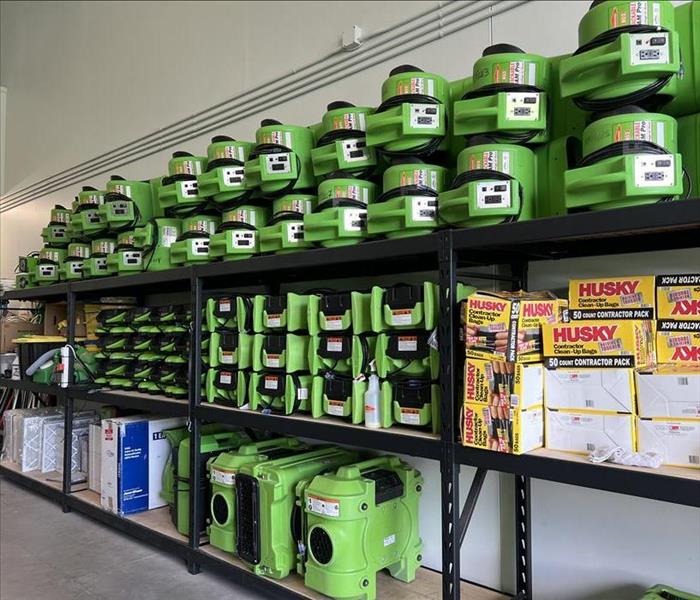 This guide will help you assemble a comprehensive emergency kit that can help you weather any storm.
This guide will help you assemble a comprehensive emergency kit that can help you weather any storm.
Storms can strike at any time in Longmont, CO, leaving communities without power, water, or access to essential services. Being prepared with the right emergency supplies can make all the difference in ensuring the safety and well-being of your family. In fact, according to FEMA, only 40 percent of Americans have an emergency plan, underscoring the need for increased preparedness. This guide will help you assemble a comprehensive emergency kit that can help you weather any storm.
Why Storm Preparedness is Crucial
Storms, whether hurricanes, tornadoes, or severe thunderstorms, can cause significant disruption to daily life. Preparing ahead of time can mitigate the risks associated with these natural events. Emergency kits are a critical component of storm preparedness, providing necessary resources for survival and comfort during and after a storm.
Essential Emergency Supplies
Water and Food
- Water: At least one gallon per person per day for at least three days, for drinking and sanitation.
- Non-perishable food: A three-day supply of non-perishable food items such as canned goods, dried fruits, and nuts.
Safety and Comfort Items
- First aid kit: Include bandages, antiseptics, pain relievers, and any prescription medications.
- Sanitation items: Moist towelettes, garbage bags, and plastic ties for personal sanitation.
- Clothing and bedding: Warm clothes, sturdy shoes, and blankets or sleeping bags.
Tools and Supplies
- Multi-purpose tool: A tool that can serve multiple functions like cutting, opening cans, and repairing items.
- Flashlights and extra batteries: Essential for power outages.
- Battery-powered or hand-crank radio: To stay informed about weather updates and emergency information.
Important Documents
- Personal identification: Copies of IDs, insurance policies, bank account records, and other crucial documents stored in a waterproof container.
- Cash: Small bills in case ATMs are down.
Communication
- Mobile phone and chargers: Including a backup power source like a solar charger or power bank.
- Emergency contact list: Written down and stored in your emergency kit.
Additional Items to Consider
Special Needs
- Infant supplies: Formula, diapers, bottles, and pacifiers.
- Pet supplies: Food, water, and any necessary medication.
Entertainment
- Books, games, and puzzles: To keep morale high during stressful times.
Conclusion
Being prepared for a storm means having the right supplies on hand to ensure your family’s safety and comfort. Building an emergency kit tailored to your needs is a proactive step toward storm preparedness. Remember, it’s not a matter of if a storm will occur, but when. Stay safe and be ready for any storm that comes your way.
For more information on storm preparedness and recovery services, visit SERVPRO®.
Stay Safe This Season: Essential Home Fire Prevention Tips for Fall and Winter
8/14/2024 (Permalink)
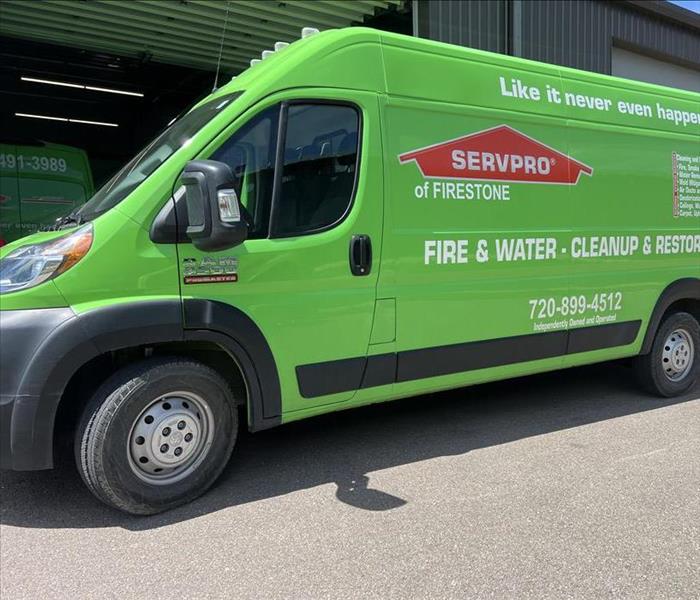 Here are some essential home fire prevention tips to keep your family safe this season.
Here are some essential home fire prevention tips to keep your family safe this season.
As the temperatures drop and we cozy up indoors, the risk of home fires increases. The fall and winter months bring unique fire hazards, from heating equipment to holiday decorations. For residents of Longmont, CO, taking proactive steps to prevent fires is crucial. Here are some essential home fire prevention tips to keep your family safe this season.
Maintain Heating Equipment
Regular Inspections and Maintenance
Heating equipment, such as furnaces, fireplaces, and space heaters, is a leading cause of home fires in the colder months. Ensure all heating equipment is inspected and maintained regularly by a professional. Clean chimneys and flues to prevent the buildup of flammable creosote.
Safe Use of Space Heaters
If you use space heaters, make sure they are placed on a flat, stable surface and at least three feet away from flammable materials like curtains, bedding, and furniture. Always turn off space heaters when leaving the room or going to bed.
Use Fireplaces Safely
Proper Fireplace Practices
Before lighting a fire, ensure your fireplace and chimney are clean and in good condition. Use a screen to prevent sparks from escaping and never leave a fire unattended. Dispose of the ashes in a metal container and store them away from your home.
Avoid Overloading Electrical Outlets
With the holiday season comes an increased use of electrical decorations. Avoid overloading outlets and use surge protectors to prevent electrical fires. Inspect lights and cords for damage before use, and replace any frayed or worn items.
Kitchen Safety
Stay Vigilant While Cooking
The kitchen is another common area where fires can start. Never leave cooking unattended, especially when using the stove or oven. Keep flammable items like towels, potholders, and paper products away from heat sources.
Install and Test Smoke Alarms
Ensure smoke alarms are installed in every bedroom, outside sleeping areas, and on every level of your home. Test alarms monthly and replace batteries at least once a year. Smoke alarms provide early warning, giving you more time to escape in the event of a fire.
Plan for Emergencies
Develop and Practice an Escape Plan
Create a fire escape plan that includes two ways out of every room and a designated meeting spot outside your home. Practice this plan regularly with all family members to ensure everyone knows what to do in case of a fire.
SERVPRO®: Your Fire Safety Partner
SERVPRO is dedicated to helping you keep your home safe from fire hazards. Our team offers expert fire damage restoration services and valuable advice on fire prevention. Contact us for more information on how we can assist in making your home safer this fall and winter.
By following these fire prevention tips, you can significantly reduce the risk of a fire in your home during the colder months. Stay vigilant, maintain your heating equipment, use electrical devices safely, and be prepared with a solid fire escape plan. Taking these precautions will help ensure a safe and cozy season for you and your loved ones.
Dehumidifiers and Mold Prevention: What You Need to Know
7/10/2024 (Permalink)
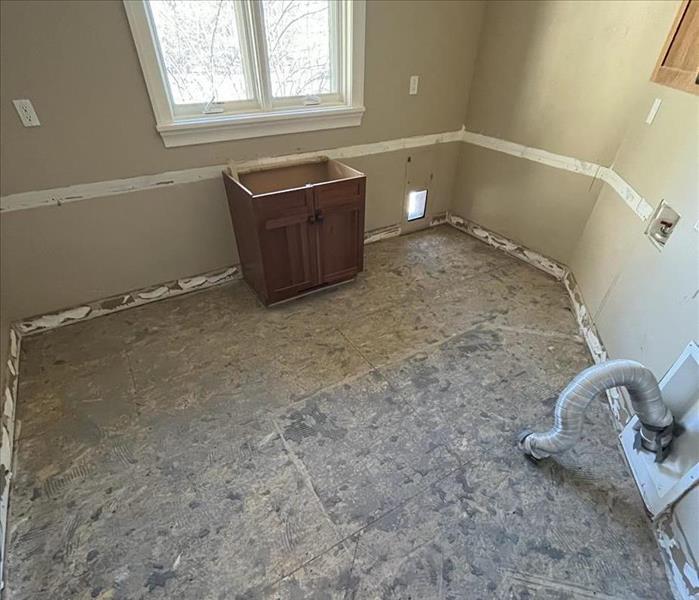 Here's what you need to know about using dehumidifiers to prevent mold issues.
Here's what you need to know about using dehumidifiers to prevent mold issues.
Dehumidifiers can be a valuable tool in mold prevention and maintaining a healthy home environment. By effectively controlling indoor humidity levels, dehumidifiers help reduce the conditions that promote mold growth. Here's what you need to know about using dehumidifiers to prevent mold issues.
Understanding Indoor Humidity
Indoor humidity refers to the amount of moisture in the air inside your home. It's measured by relative humidity, expressed as a percentage. Maintaining appropriate indoor humidity levels is crucial because excessive moisture can create the ideal environment for mold growth.
How Dehumidifiers Can Help
Dehumidifiers are designed to remove excess moisture from the air, helping to control indoor humidity. By extracting moisture, dehumidifiers create a drier and less favorable environment for mold to thrive. They can be particularly useful in areas with high humidity or inadequate ventilation, such as basements, crawl spaces, and bathrooms.
Determining the Right Dehumidifier Size
When choosing a dehumidifier, it's important to consider the size and capacity that best suits your needs. Dehumidifiers are available in various sizes, classified by the amount of moisture they can remove in a specified period. The capacity is typically measured in pints of moisture removed per day.
To determine the right dehumidifier size, consider the square footage of the area you want to dehumidify and the current humidity levels. This information can help guide you in selecting a dehumidifier that is capable of effectively controlling the moisture in your specific space.
Proper Placement of Dehumidifiers
Proper placement of dehumidifiers is essential for their effective operation. Place the dehumidifier in an area that requires moisture control, such as a room with persistent dampness or a space susceptible to mold growth. Ensure that the dehumidifier is not obstructed and has sufficient airflow for optimal performance.
Maintenance and Cleanliness
Regular maintenance and cleaning of your dehumidifier are crucial for efficient operation and long-term mold prevention. Follow the manufacturer's instructions for cleaning, emptying the water reservoir, and replacing filters. A clean and well-maintained dehumidifier helps ensure its effectiveness in controlling indoor humidity and preventing mold issues.
Additional Mold Prevention Tips
While dehumidifiers are an excellent tool for mold prevention, they are most effective when combined with other preventive measures. Here are a few additional tips:
- Properly ventilate your home, especially in high-moisture areas like bathrooms and kitchens.
- Inspect for water leaks or moisture issues and address them promptly.
- Use exhaust fans in areas prone to moisture, such as bathrooms and laundry rooms.
- Keep your home clean and dry by promptly drying wet surfaces.
- Consider using mold-resistant materials in areas prone to moisture, such as mold-resistant drywall or paint.
Professional Assistance
If you're experiencing persistent mold issues or need expert guidance in using dehumidifiers for mold prevention, SERVPRO® can provide professional assistance. Our mold remediation experts can assess your specific situation, offer tailored solutions, and help restore a mold-free environment.
Dehumidifiers are a valuable tool for controlling indoor humidity and preventing mold growth. By incorporating dehumidifiers into your mold prevention strategy and following these additional tips, you can create a healthy and mold-free home environment.
For more information on dehumidifiers and mold prevention, contact SERVPRO. Our team is ready to assist you with any mold-related concerns and provide the expertise required to maintain a safe and comfortable living space.
Extracting Excellence: The Importance of Professional Water Extraction Services
6/11/2024 (Permalink)
Water damage can strike unexpectedly, wreaking havoc on homes and businesses alike. Whether it's a burst pipe, flooding, or sewage backup, the aftermath of water intrusion can be devastating. In such situations, professional water extraction services play a crucial role in mitigating damage and restoring affected properties. In this blog, we'll explore the importance of professional water extraction services and how they contribute to efficient and effective water damage restoration.
Rapid Response
Professional water extraction services offer rapid response times, arriving on-site promptly to assess the extent of the water damage and begin extraction efforts immediately. Time is of the essence when it comes to water damage, as prolonged exposure to moisture can exacerbate damage and lead to secondary issues such as mold growth and structural damage.
Advanced Equipment
Professional water extraction companies utilize state-of-the-art equipment and technology to extract water quickly and efficiently. Industrial-grade pumps, extractors, and dehumidifiers are employed to remove standing water, dry out affected areas, and restore optimal humidity levels. These specialized tools ensure thorough extraction and minimize the risk of further damage.
Expertise and Experience
Trained technicians with expertise in water damage restoration possess the knowledge and skills necessary to assess the situation accurately and develop a comprehensive extraction plan. They understand the complexities of water damage and employ proven techniques to address water intrusion effectively, from identifying hidden moisture pockets to preventing mold growth.
Comprehensive Restoration
Professional water extraction services encompass more than just water removal – they offer comprehensive restoration solutions to address all aspects of water damage. In addition to extraction, restoration professionals conduct thorough drying, dehumidification, sanitization, and structural repairs to restore the property to its preloss condition.
Mold Prevention
One of the most significant risks associated with water damage is mold growth. Mold thrives in damp, humid environments and can begin to colonize within 24 to 48 hours of water intrusion. Professional water extraction services help mitigate the risk of mold growth by removing excess moisture and thoroughly drying affected areas, preventing mold from taking hold and spreading.
Minimized Disruption
Water damage can disrupt daily life and business operations, causing inconvenience and financial loss. Professional water extraction services work efficiently to minimize disruption and expedite the restoration process, allowing homeowners and businesses to return to normalcy as quickly as possible.
Professional water extraction services are indispensable in the aftermath of water damage incidents, providing rapid response, advanced equipment, expertise, and comprehensive restoration solutions. SERVPRO of Longmont has trained professionals and can expedite the restoration process, ultimately minimizing disruption and restoring peace of mind. When water strikes, swift action and professional expertise are essential for achieving optimal outcomes in water damage restoration.
Weathering the Storm: Minimizing Damage and Navigating Insurance Considerations in North Central Hailstorms
5/8/2024 (Permalink)
The North Central region of the United States is no stranger to severe weather, and among the various challenges, hailstorms stand out for their potential to cause significant damage to homes, vehicles, and crops. In this blog, we'll explore strategies to minimize damage during North Central hailstorms and offer insights into navigating insurance considerations to ensure a smoother recovery process.
Minimizing Damage During Hailstorms:
- Roof Inspection and Maintenance
Regular roof inspections are vital in hail-prone regions. Ensure your roof is in good condition and replace any damaged or worn-out shingles promptly. Consider impact-resistant roofing materials to enhance your roof's durability against hail.
- Protective Coverings for Vehicles
If possible, park your vehicles in a garage or covered area during hailstorms. If no covered parking is available, use blankets, car covers, or hail-resistant car mats to provide a layer of protection for your vehicles.
- Reinforce Windows and Skylights
Install impact-resistant windows and skylights, or consider adding protective coverings during hail seasons. Reinforced glass can significantly reduce the risk of shattered windows during a hailstorm.
- Hail-Resistant Siding and Exterior Materials
Consider using hail-resistant siding and exterior materials for your home. These materials are designed to withstand impact and minimize damage caused by hailstones.
- Outdoor Furniture and Décor
Secure or bring indoors any outdoor furniture, décor, or equipment that could be damaged by hail. Lightweight items can become projectiles in high winds, causing additional damage.
Insurance Considerations
- Review Your Insurance Policy
Familiarize yourself with your homeowner's insurance policy, paying close attention to coverage for hail damage. Understand the deductibles, coverage limits, and any exclusions related to hailstorms.
- Document Pre-Existing Conditions
Before hail season begins, document the current condition of your property, including the roof, siding, windows, and vehicles. This documentation can serve as evidence in the event of a hail damage claim.
- Promptly Report Damage
If your property sustains hail damage, report it to your insurance company as soon as possible. Delaying the reporting of damage may complicate the claims process.
- Document and Photograph Damage
Document the hail damage thoroughly by taking photographs and videos. Capture images of damaged areas from various angles to provide comprehensive documentation for your insurance claim.
- Obtain Multiple Repair Estimates
Seek estimates from reputable contractors for repairing the hail damage. Having multiple estimates can help ensure a fair and accurate assessment of the repair costs.
- Work with Reputable Contractors
Choose reputable and experienced contractors to carry out repairs. Check for proper licensing, insurance, and references. Working with professionals can help ensure quality repairs and a smoother insurance claims process.
- Understand Depreciation and Actual Cash Value
Insurance settlements for hail damage may be based on the actual cash value (ACV) of the damaged items, considering depreciation. Understand how this calculation works and whether your policy offers options for full replacement cost coverage.
- Consider Hail-Resistant Upgrades
Depending on the extent of the damage, consider investing in hail-resistant upgrades during the repair process. Upgrading to impact-resistant roofing, siding, and windows may provide added protection in the future.
In conclusion, North Central hailstorms pose a unique set of challenges, but proactive measures and informed insurance considerations can significantly mitigate their impact. By implementing strategies to minimize damage and understanding the nuances of insurance coverage, homeowners in hail-prone regions can navigate the aftermath of storms with greater confidence and resilience.
 Knowing how to promptly shut off your home's main water supply can significantly mitigate damage and save on costly repairs.
Knowing how to promptly shut off your home's main water supply can significantly mitigate damage and save on costly repairs.



 24/7 Emergency Service
24/7 Emergency Service






